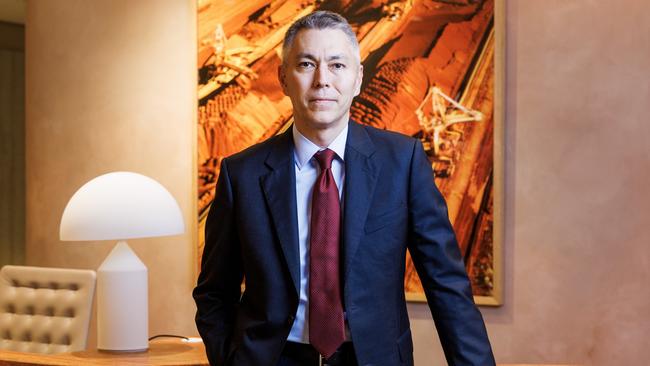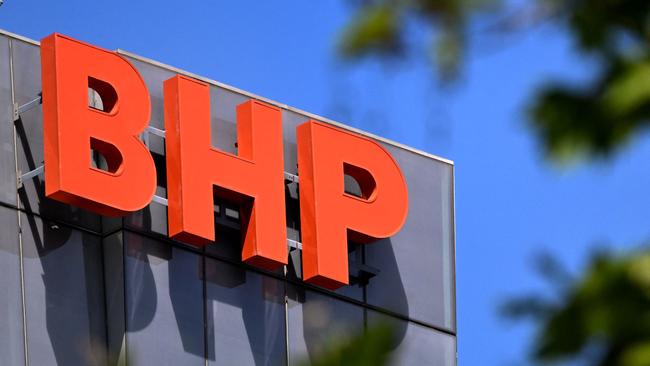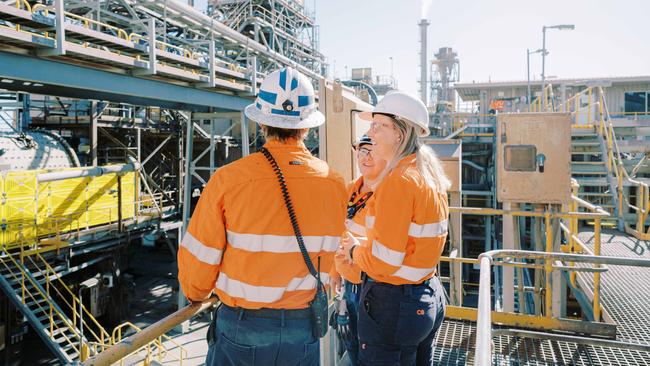BHP’s CEO triages nickel: Now come the hard choices
Even with nickel’s reputation for volatility, the speed of the price collapse took those inside BHP by surprise.

Business
Don't miss out on the headlines from Business. Followed categories will be added to My News.
Even with nickel’s reputation for volatility, the speed of the price collapse took those inside BHP by surprise.
And now chief executive Mike Henry sees himself in a position of being forced to triage to stem the bleeding. It’s after that the harder choices around the future of nickel will be made.
It’s an unusual position for BHP, which prides itself on market intelligence and runs planning horizons that span decades.
It’s a reminder too that even the biggest players are just as vulnerable to the commodity price cycle. It’s a matter of how long they can endure the pain and respond to it. Other producers, including Andrew Forrest’s Wyloo, have already shut their operations after prices fell nearly 50 per cent last year.
The good news for Henry is nickel has long been the smallest part of BHP’s mega-mine portfolio. Prices at his flagship commodity iron ore business are holding above $US100 a tonne despite the uncertain outlook for the Chinese economy and copper production is rising as prices too have started this year on a brighter note.

These provides BHP with billions in spare cashflow needed to cover this month’s telegraphed $US2.5bn ($3.8bn) in writedowns across nickel as well as a multibillion-dollar top up provision for a likely Samarco dam disaster payout.
Still, Henry knows he has to move quickly to deal with the immediate and very real nickel problem.
Last week he outlined plans to mothball the Kambalda concentrator and now he is assessing the implications of putting BHP’s entire Nickel West mining operations under care and maintenance – a move that would collectively cost thousands of jobs. This is the most likely course of action, but an outcome should be known in coming months.
Nickel, however, was the source of BHP’s financial pain that almost pushed the miner uncomfortably close to a headline loss for the December half. Underlying that, BHP hit market expectations – only just – of a $US6.6bn profit, flat on this time last year. Net debt is starting to drift up to the top end of its own targets while the downshift in the commodity cycle from the pandemic boomtime backed a 20 per cent drop in interim dividends to US72c.
It is when the losses on nickel stop through mothballing the assets, the notoriously methodical Henry will be then able to confront nickel’s longer-term future inside BHP.
To weigh this up he needs to consider if Indonesia’s aggressive ramp-up of cheap nickel production is sustainable and represents a permanent shift in global supply dynamics. There is also the risk of future disruption, as lower grade nickel now being used to prop up higher grade supply that is needed for batteries.
Then there is the question of whether the long-term demand story for nickel remains intact. This hinges on whether EV growth will continue despite recent slowdown and indeed whether batteries of the future will rely on expensive metals like cobalt and nickel.
While Henry won’t be drawn on an eventual exit by BHP from nickel, on the current settings it looks increasingly tough for the metal to compete for capital alongside other high-margin, low-cost glamour operations in BHP.
Propping up nickel is likely to be less of a priority for BHP that is about to enter a period of significant investment, including spending $US10bn to build out its greenfields Canadian potash business and expanding copper production.

In a round of briefings Henry on Tuesday said the nickel market was going to be long on supply “possibly through to the end of this decade”. Beyond that point as demand starts picking up, the outlook for the metal looks more positive. But it “will take time for supply and demand to recalibrate”.
Make no mistake, the nickel crisis is a supply story. But as much as BHP can respond, Henry is resolute the situation has a read through for all commodities. This means there needs to be a supply side response from Canberra and state governments – not bailouts.
“The single biggest thing that government needs to do is to ensure that the policy settings in Australia enable high levels of competitiveness globally,” he says.
“The opportunity ahead for the nation isn’t just nickel, it’s in critical minerals more broadly via lithium and copper and ongoing in iron ore in a world where competition is really going to heat up in the years ahead. And the nation needs to be spawning new and exciting export industries.
“That only happens if the underlying fiscal and regulatory settings enable the driving of high levels of productivity. The reality is that today we’re seeing costs go up without a commensurate increase in productivity. That isn’t a long-run winning model”.
johnstone@theaustralian.com.au
Originally published as BHP’s CEO triages nickel: Now come the hard choices



